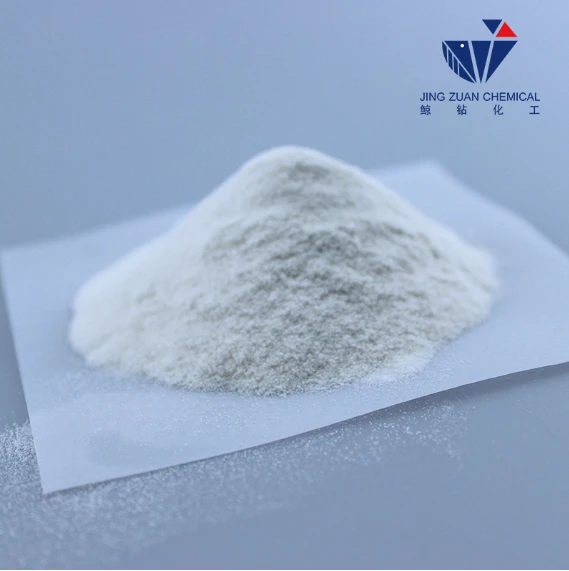
डिस . 10, 2024 13:12 Back to list
hec vs hpmc
A Comparative Study of Hydroxyethyl Cellulose (HEC) and Hydroxypropyl Methylcellulose (HPMC)
Hydroxyethyl cellulose (HEC) and hydroxypropyl methylcellulose (HPMC) are two popular cellulose derivatives that find widespread use in various industries, including pharmaceuticals, food, cosmetics, and construction. While both compounds are cellulose ethers, they have distinct chemical properties and applications that make them suitable for different uses. In this article, we will delve into the characteristics, applications, and key differences between HEC and HPMC.
Chemical Structure and Properties
HEC is derived from cellulose through the reaction of ethylene oxide with alkali cellulose. The substitution of hydroxyl groups on the cellulose chain by hydroxyethyl groups results in a water-soluble polymer. HEC is known for its excellent thickening, stabilizing, and film-forming properties. It is non-ionic and does not affect the pH of solutions, which makes it an ideal choice for various formulations that require neutral pH levels.
On the other hand, HPMC is produced by treating cellulose with propylene oxide and methyl chloride. This process introduces both hydroxypropyl and methoxy groups to the cellulose backbone. HPMC exhibits similar properties to HEC, such as thickening and film formation, but also possesses unique characteristics owing to its methoxy substitution. HPMC is also soluble in water and becomes a gel-like substance at higher concentrations, making it beneficial in specific applications.
Applications
HEC is commonly used in the pharmaceutical industry as a thickener and binder for tablet formulations. It is also employed in cosmetic products due to its ability to improve texture and stability. In the construction sector, HEC is utilized as a polymer additive in mortar and drywall formulations, enhancing workability and water retention.
hec vs hpmc

HPMC, famously used as a viscosity modifier, plays a crucial role in various applications. In the food industry, it's often used as a thickening agent to improve texture in sauces and dressings. HPMC is also prevalent in the pharmaceutical sector, where it serves as an excipient in tableting and as a controlled-release agent in drug delivery systems. Additionally, HPMC is a favored ingredient in the manufacture of gluten-free food products, as it helps to create a desirable texture without the use of gluten.
Key Differences
While both HEC and HPMC share similar thickening and stabilizing properties, several differences set them apart. One primary distinction is their solubility in different solvents. HEC is primarily soluble in water, while HPMC shows solubility in a broader range of solvents, including hot water and organic solvents. This property makes HPMC more versatile in its applications.
Furthermore, the molecular weight and viscosity of these cellulose derivatives can vary significantly. HPMC typically exhibits a higher viscosity at lower concentrations than HEC, providing it with a more pronounced thickening effect. This might necessitate using lower amounts of HPMC to achieve the desired consistency in certain formulations.
Also, the thermal stability of HPMC is generally superior to that of HEC. HPMC’s ability to maintain viscosity at elevated temperatures makes it suitable for applications involving heat processing, such as cooking or sterilization.
Conclusion
In conclusion, both hydroxyethyl cellulose and hydroxypropyl methylcellulose are vital polysaccharide additives in various industries. While they have overlapping functionalities, their distinct chemical structures, solubility characteristics, and thermal stability lead to different applications. HEC is particularly useful in areas requiring neutral pH and effective thickening, while HPMC shines where versatility and heat stability are required. Choosing between HEC and HPMC ultimately depends on the specific needs of the formulation and the desired end product characteristics. Understanding these differences allows formulators and manufacturers to make informed decisions, leading to more effective and efficient formulation design.
-
Unlocking the Benefits of HPMC Products: A Gateway to Versatile Applications
NewsAug.07,2025
-
Unleashing the Potential of HPMC Ashland: A Comprehensive Look
NewsAug.07,2025
-
Tile Bonding Cellulose: The Key to Superior Adhesion and Durability
NewsAug.07,2025
-
Hydroxypropyl Methylcellulose Powder: The Versatile Component in Modern Pharmaceuticals
NewsAug.07,2025
-
Hydroxyethyl Cellulose: The Versatile Solution for Various Industries
NewsAug.07,2025
-
Hydroxyethyl Cellulose (HEC): The Versatile Polymer for Various Applications
NewsAug.07,2025







